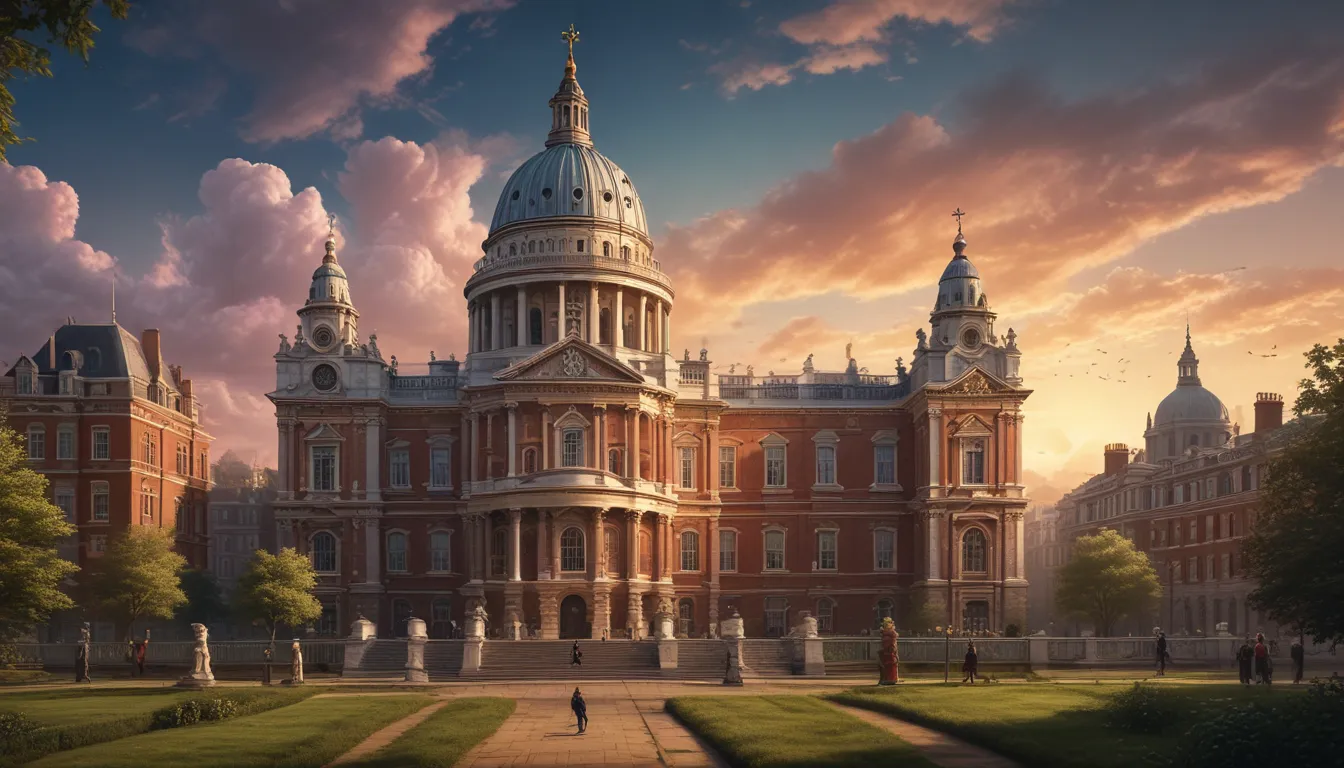The images in our articles may not match the content exactly. They are used to grab your attention, not to show the exact details in the text. The images complement the text but do not replace it.
Christopher Wren, a prominent figure in architectural history, continues to captivate and inspire us with his groundbreaking works and multidisciplinary brilliance. Born on October 20, 1632, in East Knoyle, Wiltshire, England, Wren’s impact extends far beyond the realm of architecture. In this article, we will delve into the remarkable achievements of Christopher Wren, shedding light on his iconic designs, scientific contributions, and lasting legacy. Join us as we uncover 19 mind-blowing facts about one of history’s most influential figures.
Architect Extraordinaire: Mastermind Behind London’s Skyline
Christopher Wren’s reputation as a brilliant architect, mathematician, and astronomer precedes him, earning him a place among the legends of architectural history. His iconic designs have left an indelible mark on London’s skyline, shaping the urban landscape and inspiring generations with his visionary creations.
St Paul’s Cathedral: A Masterpiece of Architectural Design
One of Wren’s most famous works, St. Paul’s Cathedral, stands as a testament to his unparalleled talent and architectural prowess. The majestic cathedral remains a timeless symbol of beauty and innovation, showcasing Wren’s mastery of design and engineering.
Rebuilding London After the Great Fire: A Testament to Wren’s Vision
Following the devastating Great Fire of London in 1666, Christopher Wren was appointed as the chief architect for the city’s reconstruction. His visionary approach to urban planning and architectural design transformed London’s landscape, leaving a lasting legacy that continues to awe and inspire.
The Royal Hospital Chelsea: A Home for Heroes
Wren’s architectural genius is exemplified in the design of the Royal Hospital Chelsea, a historic home for retired soldiers known as the Chelsea Pensioners. The iconic structure stands as a tribute to Wren’s dedication to creating spaces that are both functional and aesthetically pleasing.
Multidisciplinary Brilliance: Beyond Architecture
Christopher Wren’s talents were not confined to architecture alone. His keen interest in mathematics, astronomy, and anatomy set him apart as a true polymath, with contributions that transcended traditional boundaries and disciplines.
Wren’s Mathematical Prowess: A Legacy of Innovation
In addition to his architectural achievements, Wren’s mathematical acumen was equally remarkable. His contributions to the field of mathematics laid the foundation for new discoveries and advancements, showcasing his multifaceted genius.
The Royal Society Connection: A Pioneer of Scientific Inquiry
Wren played a pivotal role in the establishment of the Royal Society, a prestigious scientific institution dedicated to the advancement of knowledge and research. His contributions to scientific inquiry and experimentation have left an indelible mark on the world of academia.
Exploring Wren’s Legacy: From London to Virginia
Christopher Wren’s influence extended far beyond the streets of London, reaching across the Atlantic to the design of the College of William & Mary in Virginia. His architectural legacy continues to resonate with people around the world, showcasing his enduring impact on the field of architecture.
A Remarkable Figure in History: Christopher Wren’s Enduring Influence
Christopher Wren’s extraordinary life and achievements have solidified his place as one of history’s greatest polymaths. His visionary designs, scientific contributions, and lasting legacy continue to inspire generations, making him a true icon in the fields of architecture, science, and beyond.
Conclusion: Celebrating the Legacy of Christopher Wren
In conclusion, Christopher Wren’s remarkable contributions to architecture, science, and academia have left an indelible mark on the world. His innovative designs, groundbreaking discoveries, and multidisciplinary brilliance continue to inspire and captivate us, showcasing the enduring legacy of a true genius.
FAQs: Uncovering More about Christopher Wren
Q: What are some of Christopher Wren’s most famous architectural works?
A: Christopher Wren is best known for his masterpiece, St. Paul’s Cathedral, in London. He also designed notable buildings such as the Royal Observatory in Greenwich and the Sheldonian Theatre in Oxford.
Q: Did Christopher Wren have any involvement in politics?
A: Yes, Christopher Wren was politically active. He served as a Member of Parliament for various constituencies and was also appointed as the Surveyor-General of Works for King Charles II.
Q: What scientific contributions did Christopher Wren make?
A: Apart from his architectural achievements, Wren made important contributions to the fields of astronomy and medicine. He conducted experiments on the circulation of blood and was a founding member of the Royal Society, a prestigious scientific organization.
Q: How did Christopher Wren’s works influence future architects?
A: Christopher Wren’s groundbreaking architectural techniques and innovative designs had a profound impact on future architects. His emphasis on geometric precision and attention to detail set the stage for the neoclassical movement that followed.
Q: What is Christopher Wren’s legacy today?
A: Christopher Wren’s legacy is enduring. His architectural works continue to be revered and visited by millions of people each year. His scientific contributions and influential role in shaping the Royal Society have also left a lasting impact on the fields of science and academia.
As we reflect on the remarkable life and accomplishments of Christopher Wren, we are reminded of the enduring influence of this visionary genius. His architectural legacy, scientific contributions, and multidisciplinary brilliance continue to inspire and captivate us, serving as a testament to the indelible mark he left on the world. Join us in celebrating the legacy of Christopher Wren, a true icon in the annals of history.






